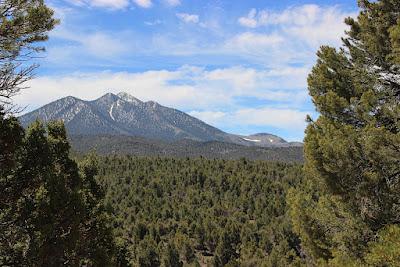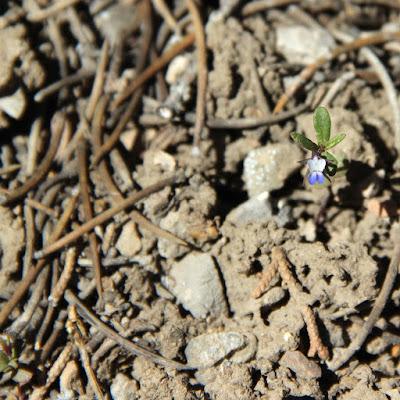
Blue-eyed Mary, Collinsia parviflora.
The piñon forests of the Great Basin lie in a great rain shadow. Air traveling east from the Pacific coast gets sucked dry—very dry. No wonder the trees are short. And because they give each other space to survive, it's it a stretch to call them a "forest". Fortunately the canopies of these small trees are large enough to provide shade for weary hikers, which we needed. I hadn't expected 85º at 8000 feet in May.Piñon forest in Egan Range near Ely, Nevada (these trees are Pinus monophylla).
Often the understory in a piñon forest is sparse, the ground covered mostly in pine needles. But not always. Spring brings color here too. At our first rest stop, I noticed tiny blue and white flowers in a sunny spot next to our shade. They were Blue-eyed Marys, and I was glad to see them. They are long-time friends.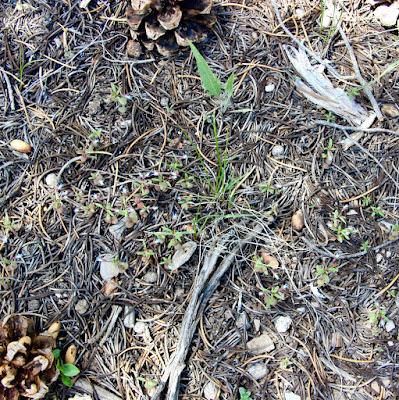
Click to zoom, then look close.
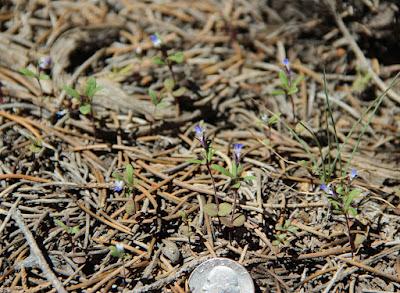
Can such tiny flowers be pollinated?
As we know, many flowers are designed (i.e., evolved) with pollinators in mind. There are all kinds of elaborate mechanisms to persuade creatures to visit, pick up pollen, and carry it away to another flower of the same species but on a different individual—the ideal form of plant sex. The purpose is outcrossing, which could increase genotypic diversity. This could help adapt to environmental change. Or there could be advantages we haven't yet discovered (scientists sometimes forget this and jump to conclusions).This Blue-eyed Mary is Collinisa parviflora, "parviflora" meaning small flower. The petals are only 4–9 mm long. Are pollinators attracted to flowers this small? Apparently so; bumblebees, mason bees and hover flies have been observed visiting C. parviflora flowers. But visitation ≠ pollination. Sometimes a plan B is needed for reproductive assurance.
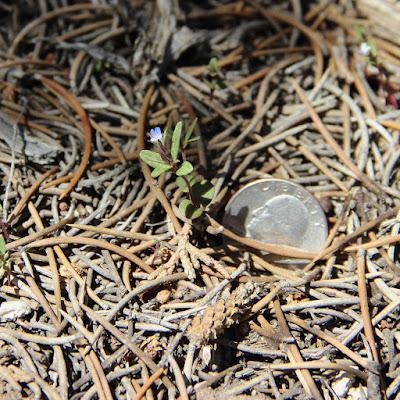 Some Blue-eyed Marys have an alternative for situations when sex with another plant is impossible: selfing (quit giggling!). This is a common strategy in plants that grow where likelihood of outcrossing is low. Perhaps tiny flowers also justify self-pollination.
Some Blue-eyed Marys have an alternative for situations when sex with another plant is impossible: selfing (quit giggling!). This is a common strategy in plants that grow where likelihood of outcrossing is low. Perhaps tiny flowers also justify self-pollination.Curious about this, researchers Elizabeth Elle and Robert Carney studied outcrossing vs. selfing in Collinisa parviflora (2003, available here). They chose three populations that differed in flower size (remember, petals can be 4–9 mm long). They saw that pollinators preferred the population with larger flowers. And with experiments, they showed that selfing was more successful (higher seed set rates) in small-flowered populations than in the large-flowered one. It looks like Blue-eyed Marys with tiny flowers are prepared to self-pollinate if nobody shows up to do the job.
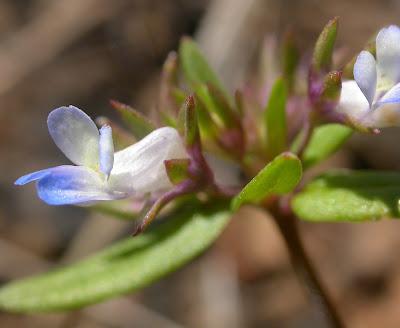
Photo courtesy Matt Lavin via Flickr.
Blue-eyed Marys in the Forest
Among dead pine needlesblue-and-whites face morning sunand still small voices whisper.Or is wind singing its way through trees?How do we catch and hold words offered usby flowers and wind? —E.M.
